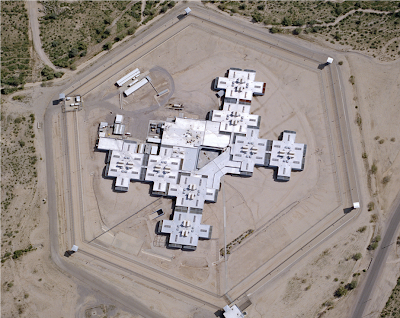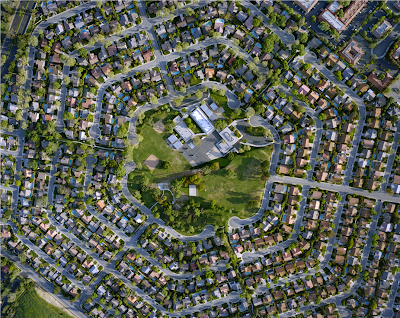Christoph Gielen
Friday, 11 June 2010
Work from his oeuvre.
“Christoph Gielen’s photographs document urban development on three continents and over four decades and they raise universal questions about the social nature of our world. To expose the macro-structures of city planning, Gielen takes a long view. From high above in a helicopter, he focuses on housing developments, construction landscapes and traffic arteries. The distance imposes an aestheticizing process on the formal patterns in urban structures and ways of life, making them appear as blocks and wedges, cylinders, squares and curves. Yet at the same time, he reproduces residential culture in a different mode of seeing.
The early photography discourse, as well as the highpoint of photography theory, held a primary fascination with photography as a “visibility device”, capable of making visible the invisible. The camera could discern what was hidden to the human eye. The “optical unconscious” (Walter Benjamin) was to become perceptible; for many, photography was the medium that might promise the potential for communicating with the dead or seeing spirits. Gielen’s work aims at awakening our own awareness of the spatial order underlying social structures. In this case, while photography may not be the means to raise the dead, it nonetheless becomes an optical device capable of revealing the fundamental structures of our societal ideology. One key feature of an ideology is the ability to present society as if it were natural and necessary and, indeed, many aspects of Gielen’s work deal precisely with the relationship between nature and society.
The agenda of avant-garde photography was to reflect an unquestioned culture the so-called second nature in the light of a primary nature. Technology and nature, the environment and society, were systematically superimposed. This was an approach accompanied by an optimistic aesthetic avowal of faith in a technological civilisation. The cover of Albert Renger-Patzsch’ Die Welt ist schön (The World is Beautiful) was adorned by a vignette juxtaposing an electricity pylon with a tree mirroring the same structure.” – Johan Frederik Hartle, Assistant Professor for Philosophy of Art, Media and Culture, University of Amsterdam




